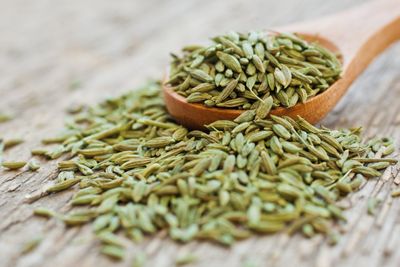When Should I Be Harvesting Anise Seed?
Anise flowers are white and wispy and very similar in appearance to Queen Anne’s lace. It takes them quite a while to develop seeds, and about 100 frost-free days of growth are required before anise seed harvest can take place. In late summer or early autumn, you should notice the flowers developing small, green seeds. Some gardeners insist that you should leave the plants alone until the seeds dry out and turn a muddy brown color. Others hold that you should harvest them when they’re still green and let them ripen and dry indoors. Both are viable options, but considering how long it takes the seeds to form, most gardeners would benefit from getting them indoors when they’re still green, before the autumn frost hits.
Anise Seed Harvest Methods
Whether you’re picking anise when it’s ripe or not, there’s no need to collect the tiny seeds one at a time. Instead, snip the stems below the flower heads. If the seeds are still green, tie the flowers together into a bundle and hang them upside down in a cool, airy place. Make sure to put a container or a cloth beneath them to catch the seeds, which should ripen and dry out naturally. If you’ve waited until the seeds are already dry, gently shake the flowers upside down over a container, or inside a paper bag. If they’re ripe, the seeds ought to fall right off.
Storing Anise Seeds
After picking anise seeds, it’s important to store them correctly. Make sure the seeds are completely dry, then place them in an airtight container or jar. Avoid adding any cloth or paper towels, as this will just consolidate moisture and lead to problems. Store your container in a cool, dark place, and enjoy your homegrown anise seeds all year long.
